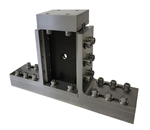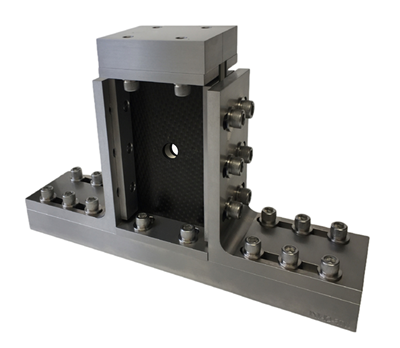Remembering Don Adams
When one thinks of composites test methods, one thinks of Don Adams. Don passed away at the end of 2022. We remember him here.
Don Adams. Photo Credit: Wyoming Test Fixtures
I think we all understand that the composites industry has been and continues to be shaped by people who have a deeply felt dedication to the development and advancement of fiber-reinforced materials and processes.
The hard part, especially for those of you new to this industry, is to understand the significance of these accomplishments and how they still resonate today. In that spirit, I want to tell you about someone who you likely did not know — or, for those who have spent their career in composites, and similarly, spent it with ÂÌñÏ×ÆÞ, someone you did know quite well — and whose influence you almost certainly have felt.
I first met Dr. Don Adams in 2007. I had just become editor-in-chief of CW. Don was the founder of and an author for CW, writing a column called Testing Tech, which focused on test protocols and standards for composite materials.
Don started writing for CW in March 2005 and was a much-respected figure in these pages, sharing his long experience and deep knowledge of best practices in materials testing. His articles are among the most loyally read in the magazine’s history.
In January 2023, just after the holidays, we learned that in late December. He was 87. Don’s close affiliation with CW, combined with his influence on the industry, demands a closer look at his accomplishments and contributions. I talked to Dan Adams, Don’s son, about his father to better understand his life and work.
Don was born in 1935 in Streator, Ill., U.S. He attended the University of Illinois, where he earned his bachelor’s in mechanical engineering in 1957. He married his high school sweetheart Roberta that summer and they moved to Southern California where Don had landed a job with Northrop Aircraft Corp.
While at Northrop, Don earned his master’s in mechanical engineering from the University of Southern California. Then, it was back to the University of Illinois, where Don received his Ph.D in theoretical and applied mechanics in 1963.
Don decamped again to California, working first for the Aeronautic Div. of Ford Motor Co. and then, in 1967, the Rand Corp. Dan says it was here, at Rand, that Don first started developing new test methods for composites. The composites industry was still in its infancy and composite-specific test methods were in the very early stages of development. Don, says Dan, was on the ground floor of this important discipline.
I remember Don as a quiet, thoughtful, dedicated person who had deep respect for his work and the people who surrounded him.
At Rand, Don helped develop the first of two composite test methods with which he is most closely associated. The first is the Iosipescu shear test method, adapted from a sheet metal shear test method and developed in response to demand for a composites shear test standard. Today, that composites test method is very well known as .
Don’s second big contribution came a few years later, at the University of Wyoming (Laramie), where, in 1972, he’d taken a faculty position in the Department of Mechanical Engineering. (Ask Dan what it was like to move from Malibu to Laramie as an eighth grader.) Don founded the Composite Materials Research Group (CMRG) at the university and while there developed the Combined Loading Compression (CLC) test method, known today as .
(From Don’s book: “The Iosipescu shear test method and specimen configuration are based on the original work with metals by Nicolai Iosipescu of Romania (1957), from which the test method derives its name.” Fun fact: In reality, it was Don who preserved the name “Iosipescu” shear test, as he wanted to ensure that the original founder was given credit when Don and his colleagues/students developed the adaptation of the method for composites.)
Don’s tangible contributions notwithstanding, his legacy rests in part on the fact that he was among a small group of early innovators in composites testing. Plus, he had a natural predilection for educating and helping people. “He always enjoyed hearing about other’s testing experiences and he was really good at helping guide people through the testing process,” Dan emphasizes. This knowledge and experience was highly sought after in this young and dynamic discipline.
Another of Don’s trademarks was his ability to apply dogged research to prickly test method problems. Dan says Don became known at ASTM meetings for turning controversial test questions into graduate research projects, and then leveraging the resulting data into improved standards. “He didn’t just have opinions,” Dan says. “He had the data to back them up.”
I remember Don as a quiet, thoughtful, dedicated person who had deep respect for his work and the people who surrounded him. He holds a special place in the history of this industry and will be very missed.
And, of course, Don lives on in CW and in the industry through Dan, who took over his father’s column-writing duties in 2015. Since then, Dan has been a regular contributor to our Design & Testing column and carries the same passion for composite materials testing as his father.
Related Content
Laser-excited acoustics provide contact-free, nondestructive composites inspection
Xarion’s couplant-free NDT technology uses laser physics and a membrane-free optical microphone, eliminating the requirement for fluid coupling, widening the scope for NDT technology.
Read MoreUniversity of Bristol launches composite materials to space for ISS testing
Next-gen carbon fiber materials will be tested under extreme conditions for 12-18 months to determine their viability in space for use in future space bases, interplanetary travel.
Read MoreDetermining steel/composite failure load of bonded repair assemblies
Bureau Veritas and partners use a novel equivalent interface test specimen and simulation to predict failure load in bonded composite patch repairs to steel structures.
Read MoreORNL demonstrates lightning strike protection tech for composites
Researchers, led by Vipin Kumar, developed a low-cost, recyclable carbon fiber wind turbine blade tip that showed resilience to high-voltage lightning strikes, with more innovations in store.
Read MoreRead Next
Notched testing of sandwich composites: The sandwich open-hole compression test
A new ASTM-standardized open-hole compression test method seeks to determine the notch sensitivity of sandwich composites.
Read MoreNext-gen fan blades: Hybrid twin RTM, printed sensors, laser shock disassembly
MORPHO project demonstrates blade with 20% faster RTM cure cycle, uses AI-based monitoring for improved maintenance/life cycle management and proves laser shock disassembly for recycling.
Read MoreCutting 100 pounds, certification time for the X-59 nose cone
Swift Engineering used HyperX software to remove 100 pounds from 38-foot graphite/epoxy cored nose cone for X-59 supersonic aircraft.
Read More












